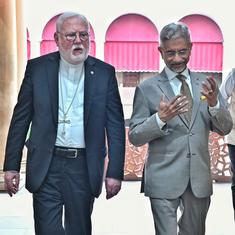Economic inequality in India can be remedied through wealth tax on richest 0.04%: Report
The revenue generated can be directly transferred to the bank accounts of the poor and be used to increase social spending, said the authors of the study.

India’s growing income and wealth inequality can be remedied by introducing a comprehensive and progressive wealth tax package for the ultra-rich, a report published on Friday by World Inequality Lab has suggested.
The report is a follow-up to a World Inequality Lab study – Income and wealth inequality in India, 1922-2023: The rise of the Billionaire Raj – published on March 19. Authored by economists Nitin Kumar Bharti, Lucas Chancel, Thomas Piketty and Anmol Somanchi, it showed that the income and wealth share of India’s richest 1% of India’s population are at their highest in the country’s history.
The richest 1% of India’s population held 22.6% of the country’s income and 40.1% of wealth in 2022-’23, the study claimed, pointing out that the rise of top-end inequality in India has been particularly pronounced in terms of wealth concentration between 2014-’15 and 2022-’23.
Building on these findings, the same authors have now proposed a “crorepati tax” in their new report, proposed to be paid only by those whose net wealth exceeded Rs 10 crore in 2022-’23.
“Based on our latest estimates, only the top 0.04% of adults would fall above this threshold,” said the report.
The authors have proposed three variants of the tax package: baseline, moderate and ambitious.
In the baseline variant, an annual tax of 2% would be imposed on individuals with net worth exceeding Rs 10 crore along with a 33% inheritance tax on estates with valuation of over Rs 10 crore. “As per our estimates, this alone would generate a massive 2.7% of gross domestic product in revenues,” said the report.
Under the moderate variant, the authors proposed increasing the tax rate to 4% for individuals with a net worth exceeding Rs 100 crore along with a 33% inheritance tax on estates with valuation between Rs 10 crore and Rs 100 crore. For estates with a valuation over Rs 100 crore, it proposed raising the inheritance tax to 45%. According to the report, this tax regime would be able to generate revenue equal to 4.6% of India’s gross domestic product.
Under the ambitious tax regime, wealth thresholds will remain unchanged but tax rates are proposed to be increased to between 3% and 5% for wealth tax, and between 45% to 55% for inheritances. With this, tax revenues could increase to 6.1% of the gross domestic product, the authors have noted.
The revenue thus generated can be invested in “re-distributive policies” such as direct cash transfers to the poor and increased spending in health, education and other social sectors.
“Combining our estimates of potential tax revenues with estimates of government expenditures, we find that wealth tax packages of the kind proposed here would create significant fiscal space to expand social sector expenditure,” said the report.
The authors pointed out that the baseline variant of the wealth and inheritance taxes would allow for “nearly doubling the current public education expenditure while the moderate variant would allow nearly doubling the combined health and education budget”.
“The ambitious variant would allow doubling the government’s combined budget on health and education and still leave plenty extra,” the report claimed, adding that the magnitudes of potential tax revenues proposed are “truly quite large”, while affecting only the top 0.04% of the population.
The report also analysed how economic inequalities in India are related to caste hierarchies, noting that “upper castes hold a significantly disproportionate share of national wealth, and that Indian billionaires are largely an upper caste club”.
“A progressive wealth tax package…is most likely to benefit lower castes and the middle classes at the detriment of only a tiny number of ultra-wealthy upper caste families,” the report said. “In that respect, besides addressing extreme wealth inequality, such taxes could also play a small role in weakening the rigid link between social and economic inequalities in India.”
Also read:
Top 1% in India holds higher income share than in US, Brazil and South Africa: Study
India is among the most unequal countries, says World Inequality Report









